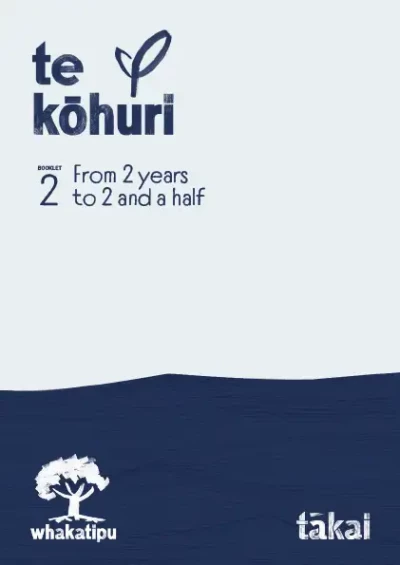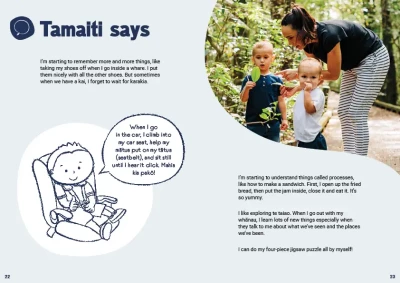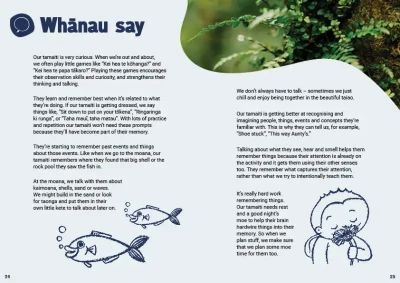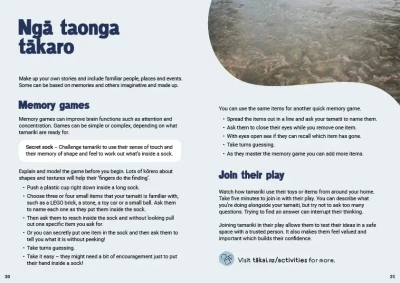
Memory for the way things are done
As children start to develop their memory, they learn that certain activities happen through following simple steps in a process. Whānau can support this learning by talking out loud as they move through each step.
At this stage, children are developing their memory and a sense of past, present and future. Memory for ‘process’ or how things are done happens in very simple, everyday ways for young children.
On page 22 of the Whakatipu booklet Te Kōhuri 2, tamaiti says, ‘I’m starting to remember more and more things, like taking my shoes off when I go inside a whare . I put them nicely with all the other shoes. But sometimes when we have a kai, I forget to wait for karakia.'
Ask the whānau:
- What things has your child learned that are similar to this?
- What tikanga do you practise in your home?
Steps in a process
On page 23 of Te Kōhuri 2, tamaiti says, ‘I’m starting to understand things called processes, like how to make a sandwich. First, I open up the fried bread, then put the jam inside, close it and eat it. It’s so yummy.'
Ask whānau to think of the steps you take when you all get ready to go out, or something else that happens regularly.
- How do you think your child learns those things?
- How do you help?
- What more might you do to help the learning?
We all need help to learn how new things are done.
- How do you learn new things best?
Talking through the steps that make up the process can help little ones. For example, we could say ‘First we’ll do … such and such … and then we’ll … and last of all … Now we’re ready.’
After a few repeats, parents might ask ‘What shall we do first? … then what? ... then what do we need? … what should we do next?’
Talking
Learning can be firmed up by talking about events afterwards. That strengthens the memory for everyone. For example, ‘What did we do first? … what happened next? … what did we need to do to make it ready?’
Page 26 of Te Kōhuri 2 explains that the best way for tamaiti to learn about concepts is to involve them in everyday activities.
‘Can you help me with the washing? Let’s start by getting all the dirty clothes … then we need to sort it into whites and coloured, or clothes and towels … can you put them in the washing machine? Put in the washing powder'... and so on.
Developing memory
Page 25 of Te Kōhuri 2 outlines how talking to tamaiti about what they see, hear and smell helps them to remember things. Here’s an example: ‘Let’s do some baking. First we need a recipe so we know what to do and in what order. Let’s see what we need.’
There’s a lot of learning to do, and there are lots of different games that can help develop memory. Some memory games are suggested in the Whakatipu booklet Te Kōhuri 3, in the 'Ngā taonga tākaro' section on pages 30–31.
Children love having their favourite story books read to them. And if we try to change anything or miss something out, we soon find out they have memorised the order of the story.
 pdf 12 MB
pdf 12 MB














